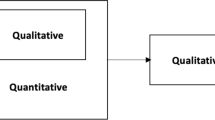Abstract
Borrowing principles from total quality management and the emerging consumer-satisfaction movement in the field of ageing, we explored how technology might assist family members who are caring at home for a relative with dementia. In Phase 1, focus groups with a total of 26 current and former caregivers revealed that as caregivers and the relatives for whom they care struggle to maintain continuity of roles, relationships, and lifestyles, safety is a key concern. Despite the limited use by some caregivers of “low-tech” tools (e.g., door alarms, intercoms), caregivers lack a comprehensive system to enhance their relatives’ safety. In Phase 2, we identified an Internet-based monitoring system to address caregivers’ major concerns. In Phase 3, focus groups with eight caregivers evaluated the system that was identified in Phase 2. Results suggest that affordable technologies exist to assist family caregivers, and that these caregivers were amenable to the use of these technologies.
Similar content being viewed by others
References
Agree, E. M., & Freedman, V. A. (2000). Incorporating assistive devices into community-based long-term care: An analysis of the potential for substitution and supplementation. Journal of Aging and Health, 12, 426–450.
Applebaum, R. A., Straker, J. K., & Geron, S. M. (2000). Assessing satisfaction in health and long-term care: practical approaches to hearing the voices of consumers. New York: Springer.
Arguelles, S., & von Simson, A. (1999). Innovative family and technological interventions for encouraging leisure activities in caregivers of persons with Alzheimer’s disease. Activities, Adaptation and Aging, 24, 83–97.
Brennan, P. F., Moore, S. M., & Smyth, K. A. (1991). ComputerLink: Electronic support for the home caregiver. Advances in Nursing Science, 13, 14–27.
Cavanaugh, G., & Emerman, J. (n.d.). ASA study: Aging agencies must do more on assistive technology. Retrieved on July 10, 2001 from http://www.asaging.org.
Cheston, R., & Bender, M. P. (1999). Understanding dementia: The man with the worried eyes. London: Jessica Kingsley.
Cox, C. (1997). Findings from a statewide program of respite care: A comparison of service users, stoppers, and non-users. The Gerontologist, 37, 511–517.
Gitlin, L. N. (1995). Why older people accept or reject assistive technology. Generations, 19, 41–45.
Gitlin, L. N., Corcoran, M., Winter, L., Boyce, A., & Hauck, W. H. (2001). A randomized, controlled trial of a home environmental intervention: Effect on efficacy and upset in caregivers and on daily function of persons with dementia. The Gerontologist, 41, 4–14.
Kart, C. S., Kinney, J. M., Murdoch, L. D., & Ziemba, T. F. (2002). Crossing the digital divide: Family caregivers’ acceptance of technology. Oxford, OH: Miami University Ohio Long-Term Care Research Project.
Liu, K., Manton, K. G., & Aragon, C. (2000). Changes in home care use by disabled elderly persons: 1982–1994. Washington, DC: AARP.
Mahoney, D. F. (1998). A content analysis of an Alzheimer family caregivers’ virtual focus group. American Journal of Alzheimer’s Disease, 13, 309–316.
Mann, W. C., Hurren, D., Tomita, M., & Charvat, B. A. (1995). The relationship of functional independence to assistive device use of elderly persons living at home. Journal of Applied Gerontology, 14, 225–247.
Mann, W. C., & Tomita, M. (1998). Perspectives on assistive devices among elderly persons with disabilities. Technology and Disability, 9, 119–148.
Marshall, M. (1999). Technology to help people with dementia remain in their own homes. Generations, 23, 85–87.
National Alliance for Caregiving/AARP. (1997). Family caregiving in the U.S.: Findings from a national study. Washington, DC: National Alliance for Caregiving/American Association of Retired Persons.
Parmelee, P. A., & Lawton, M. P. (1999). The design of special environments for the aged. In J. E. Birren & K. W. Schaie (Eds.), Handbook of the psychology of aging (3rd ed.) (pp. 464–488). San Diego: Academic Press.
Schulz, R., Maddox, G., & Lawton, M. P. (Eds.) (1999). Annual review of gerontology and geriatrics: Focus on interventions research with older adults. New York: Springer.
Smyth, A., & Harris, P. B. (1993). Using telecomputing to provide information and support to caregivers of persons with dementia. The Gerontologist, 33, 123–127.
Strauss, A., & Corbin, J. (1998). Basics of qualitative research: Techniques and procedures for developing grounded theory (2nd ed.). Thousand Oaks, CA: Sage.
Wagner, D. L. (1997). Comparative analysis of caregiver data for the caregivers to the elderly, 1987 and 1997. Bethesda, MD: National Alliance for Caregiving.
Author information
Authors and Affiliations
Corresponding author
Additional information
Dr. Kinney’s research focuses on caregiving within later-life families. She is co-author (with Cary Kart) on the sixth edition of the textbook The Realities of Aging.
His research focuses on health and aging, and he recently completed a National Institute of Aging funded project on diabetes and self-care. His work has appeared in Social Forces, the Journal of Gerontology, The Gerontologist, and the Journal of Aging and Health, among other journals.
Her research interests include the use of technology by older adults and the financial impact of caregiving on the family.
She received her Bachelors of Health Science degree in Occupational Therapy from the University of Florida in 1990. Her Occupational Therapy career has focused on patient treatment and program development, with an emphasis on dementia intervention, and management in the long-term care setting.
Rights and permissions
About this article
Cite this article
Kinney, J.M., Kart, C.S., Murdoch, L.D. et al. Challenges in caregiving and creative solutions: Using technology to facilitate caring for a relative with dementia. Ageing International 28, 295–313 (2003). https://doi.org/10.1007/s12126-002-1009-x
Accepted:
Issue Date:
DOI: https://doi.org/10.1007/s12126-002-1009-x




